The Sports SCHOLARSHIPS Insiders Guide
GETTING MONEY FOR COLLEGE AT ANY DIVISION
2ND EDITION
DION WHEELER

Copyright 2005, 2009 by Dion Wheeler Cover and internal design 2009 by Sourcebooks, Inc. Front cover design by Cyanotype Book Architects Cover photos iStockphoto.com/timeless, md8speed, sumnersgraphicsinc, klikk, bcebul, mypokcik Internal photo Digital Vision Tables on pages 33 and 39-42 The National Collegiate Athletic Association Sourcebooks and the colophon are registered trademarks of Sourcebooks, Inc. All rights reserved. No part of this book may be reproduced in any form or by any electronic or mechanical means including information storage and retrieval systemsexcept in the case of brief quotations embodied in critical articles or reviewswithout permission in writing from its publisher, Sourcebooks, Inc. This publication is designed to provide accurate and authoritative information in regard to the subject matter covered. It is sold with the understanding that the publisher is not engaged in rendering legal, accounting, or other professional service.
If legal advice or other expert assistance is required, the services of a competent professional person should be sought.From a Declaration of Principles Jointly Adopted by a Committee of the American Bar Association and a Committee of Publishers and Associations All brand names and product names used in this book are trademarks, registered trademarks, or trade names of their respective holders. Sourcebooks, Inc., is not associated with any product or vendor in this book. Published by Sourcebooks, Inc.
P.O. Box 4410, Naperville, Illinois 60567-4410
(630) 961-3900
FAX: (630) 961-2168
www.sourcebooks.com Originally published in 2000. Library of Congress Cataloging-in-Publication Data Wheeler, Dion. p. cm. (alk. paper) 1. paper) 1.
Sports--Scholarships, fellowships, etc.--United States. 2. Universities and colleges--United States--Admission--Planning. I. Title.
Acknowledgments
With Special Thanks To: Peter Lynch, my editor, who believed in this project and required that it be complete.
Acknowledgments
With Special Thanks To: Peter Lynch, my editor, who believed in this project and required that it be complete.
Betsy Lancefield Lanemy light at the end of the rejections. My wife and best friend, Dianne, without whose publishing wisdom and insight and remarkable patience, this book would never exist.
Introduction
The confluence of two seemingly unconnected and important aspects of collegiate culture combine to create an interesting phenomenon: the distribution of financial aid for athletic ability by a huge majority of Americas colleges. Soon after athletic competitions between schools began, it became clear that the student bodies of the schools took the contests quite seriously and they preferred winning as opposed to losing, no matter how much sportsmanship the athletes on the fields of competition exhibited. And they didnt want to win occasionally; they wanted victories on a consistent basis. The winning formula became obvious: when your team has better players, your team dramatically increases its chances to win these important contests.
The obvious question followed, How can the best players on the field wear our schools colors? Athletic Scholarships (having little to do with scholarship) were created and the rest is Recruiting History. Is your dream to exploit this situation so you can continue your athletic career and simultaneously have your athletic ability be rewarded with a reduced financial burden while competing and earning your college education? Is that why you are here, to leverage your athletic ability to create educational and other amazing opportunities for your future? If so, youve come to the right place. This book is designed to help your son or daughter become a successfully recruited high-school student athlete. It is constructed to provide you with the tools, devices, and strategies to give you the best opportunity to continue an athletic career in college and to receive financial aid based upon your athletic ability. For the purposes of this book, the term financial aid will include scholarships, grants, low-interest loans, or any combination of the above. In short, The Sports Scholarships Insiders Guide is intended to give you an advantage over other equally qualified student athletes who dream your educational, athletic, and financial aid dream.
I am uniquely qualified to lead you through the tangled web of recruiting confusion, duplicity, and unfairness. For twelve years I coached at a NCAA member university. One of the primary responsibilities in my position was recruiting high-school student athletes. I coached at three high schools in two Midwestern states over a fourteen-year period. Much of this time was spent working with college recruiters, as well as the parents and prospects of those who were being recruited. I have two grown children who were both successfully recruited: one by a Division I state university and the other by a private Division III college.
One was an All-American and the others career was cut short by injury. I empathize with the positions that all the parties involved find themselves in. I know intimately what each one is going through during all phases of the recruiting process, especially the crucial and fragile negotiating prior to an offer of athletic or other financial aid and a roster position. I owned a college prospect recruiting service. My clients were academically and athletically qualified student athletes wanting expert help in becoming professionally exposed to college coaches. I contacted and often negotiated with coaches and recruiters on behalf of my clients.
I am a member of the Recruiting Education Speakers Bureau of the National Collegiate Scouting Association: www.ncsasports.org. You are about to use the inside knowledge I have accumulated, sometimes painfully, over many years of experience as the parent of recruited student athletes, a high-school coach, a recruiting service owner, and as a college coach and recruiter. Today, there exists a nearly uncountable number of opportunities for qualified athletic prospects to leverage their ability to play and to learn. More than 1,700 colleges and universities offer athletic programs. Thats good news! Theres more good news, however theres some not so good news, too. Only 7 percent of those 1,700 institutions offer full grant-in-aid Division I athletic scholarships.
That covers less than 1 percent of student athletes! So it should be obvious that a colossal majority of the opportunities to play your sport and receive financial aid for your athletic ability are located outside Division I. And the coaches of those colleges want to put uniforms with their schools colors on the best players available. But how will they find them? They need your help! Although you may be an outstanding prospect, you may well be overlooked and not offered financial aid for your athletic ability, especially in nonrevenue sports. How will those coaches find you? They need your help! This book will help you help them and create opportunity for yourself, as well. Need more proof of athletic financial aid opportunity? According to an NCAA Executive Summary, since 1981, the number of college women athletes has increased by nearly 98,500 and men athletes by nearly 61,500. And the NCAA has raised the minimum number of Division I varsity teams from fourteen to sixteen, which means that fifteen to thirty new prospects must be recruited.
Effectively using the information in this book requires that you have discipline, courage, and persistence (fundamental traits of successful athletes). If you studiously follow its suggestions and techniques and are in fact qualified to compete in college (either a four- or a two-year school), both in the classroom and in your sport, you can look forward to being successfully recruited and receiving significant financial aid for your athletic ability.

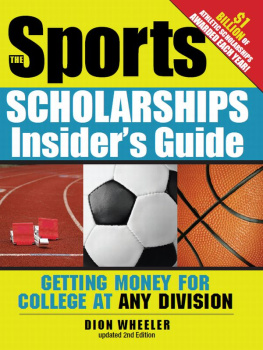
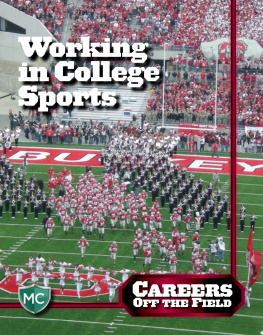

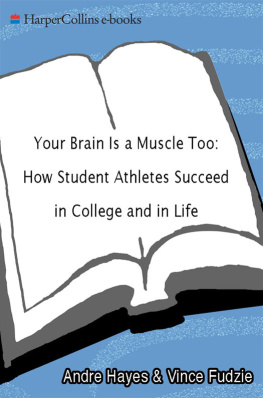
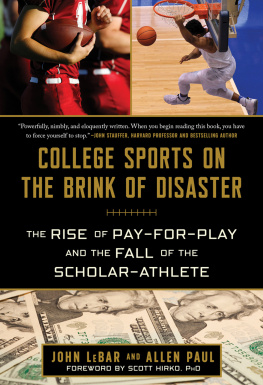
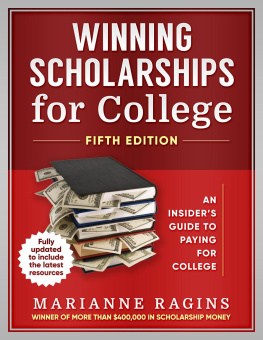
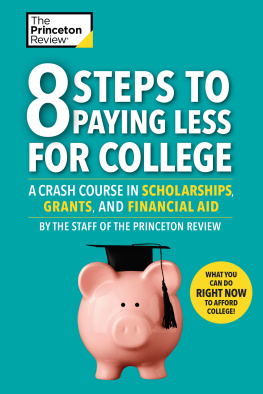


 Copyright 2005, 2009 by Dion Wheeler Cover and internal design 2009 by Sourcebooks, Inc. Front cover design by Cyanotype Book Architects Cover photos iStockphoto.com/timeless, md8speed, sumnersgraphicsinc, klikk, bcebul, mypokcik Internal photo Digital Vision Tables on pages 33 and 39-42 The National Collegiate Athletic Association Sourcebooks and the colophon are registered trademarks of Sourcebooks, Inc. All rights reserved. No part of this book may be reproduced in any form or by any electronic or mechanical means including information storage and retrieval systemsexcept in the case of brief quotations embodied in critical articles or reviewswithout permission in writing from its publisher, Sourcebooks, Inc. This publication is designed to provide accurate and authoritative information in regard to the subject matter covered. It is sold with the understanding that the publisher is not engaged in rendering legal, accounting, or other professional service.
Copyright 2005, 2009 by Dion Wheeler Cover and internal design 2009 by Sourcebooks, Inc. Front cover design by Cyanotype Book Architects Cover photos iStockphoto.com/timeless, md8speed, sumnersgraphicsinc, klikk, bcebul, mypokcik Internal photo Digital Vision Tables on pages 33 and 39-42 The National Collegiate Athletic Association Sourcebooks and the colophon are registered trademarks of Sourcebooks, Inc. All rights reserved. No part of this book may be reproduced in any form or by any electronic or mechanical means including information storage and retrieval systemsexcept in the case of brief quotations embodied in critical articles or reviewswithout permission in writing from its publisher, Sourcebooks, Inc. This publication is designed to provide accurate and authoritative information in regard to the subject matter covered. It is sold with the understanding that the publisher is not engaged in rendering legal, accounting, or other professional service.